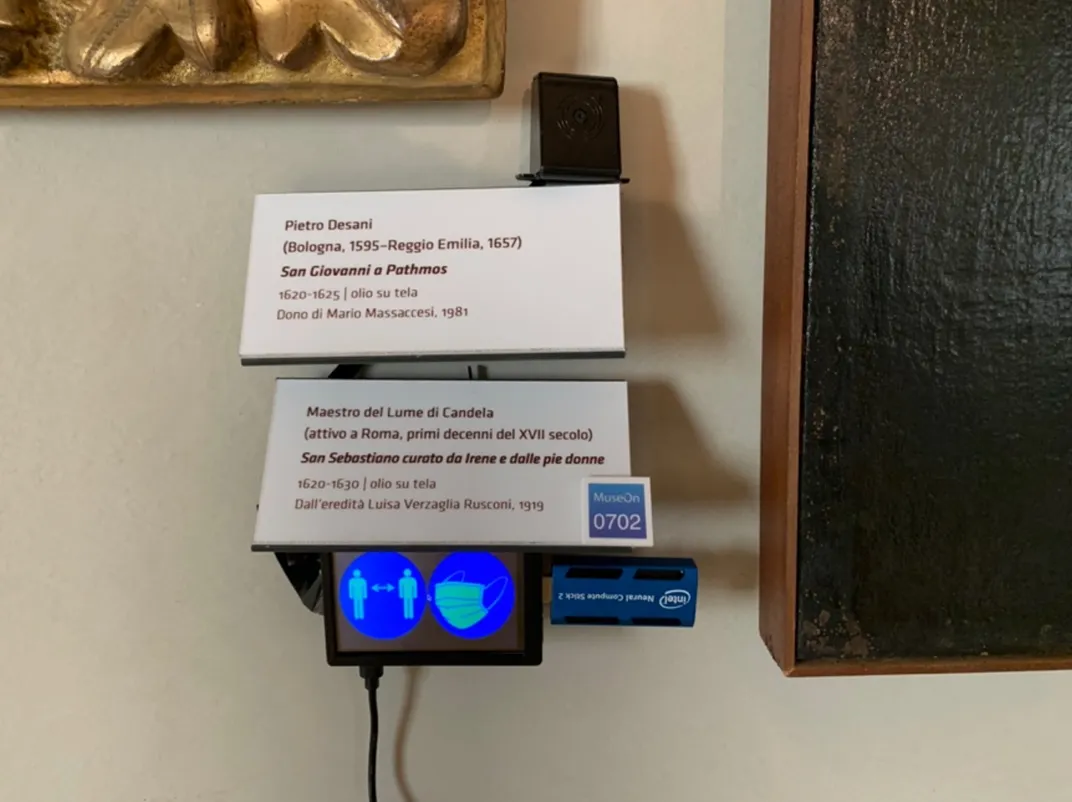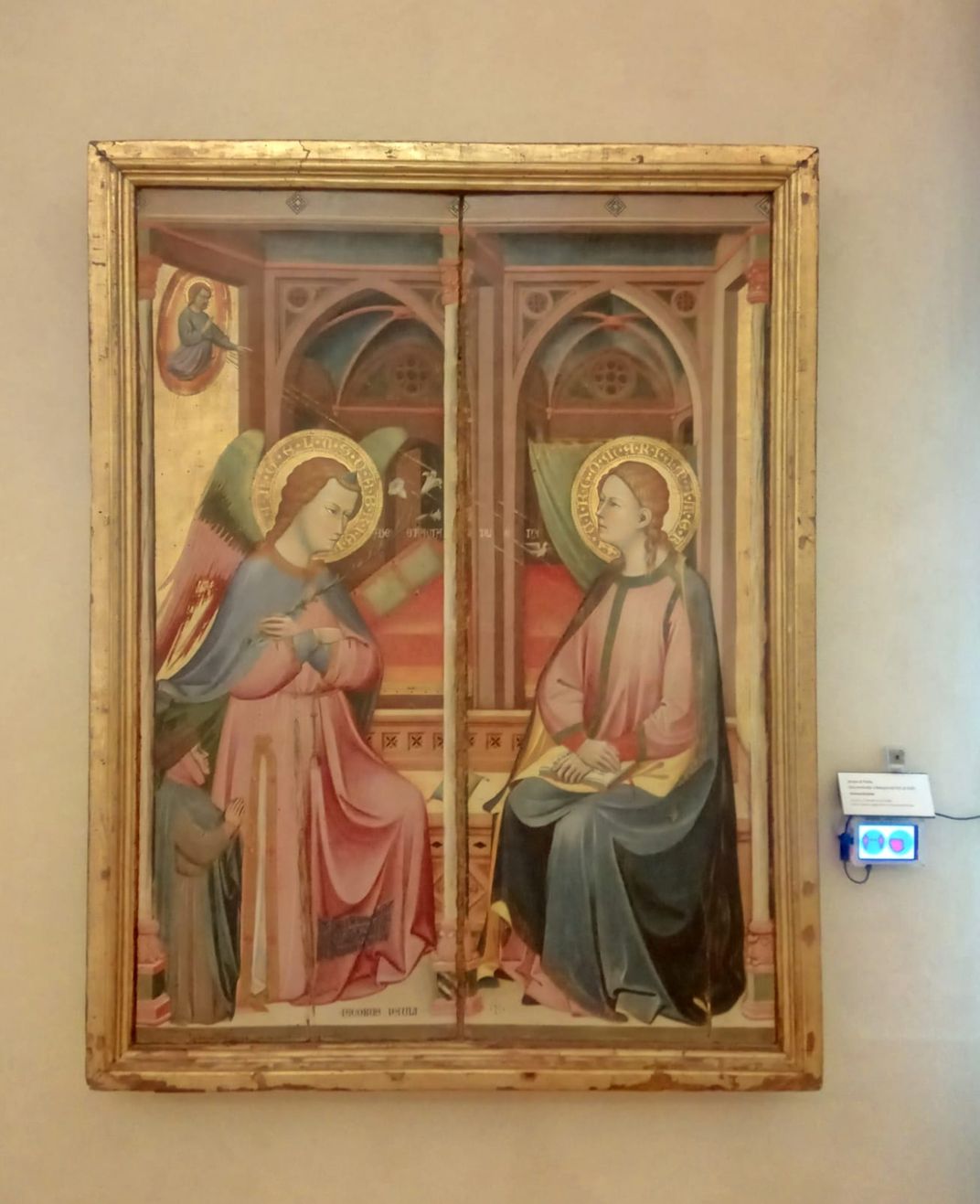Italian Museum Uses Cameras to Track How Visitors Engage With Art
A new A.I. system hopes to help curators determine artworks’ “attraction value” and optimize gallery layouts
:focal(625x467:626x468)/https://tf-cmsv2-smithsonianmag-media.s3.amazonaws.com/filer/e5/56/e5562ec3-203e-4368-afbb-e3d30af0ca03/annunciazione-dispositivo.jpg)
Museum curators often encourage visitors to study art at length. (Slow Art Day, an annual event that asks participants to spend five to ten minutes staring at a single artwork, exemplifies this mindset.) Now, reports Flavia Rotondi for Bloomberg CityLab, researchers in Bologna, Italy, are turning the tables by placing the spotlight on the guests themselves.
Per a statement, a team working with ENEA, the Italian national agency for new technologies, and the Istituzione Bologna Musei installed 14 small cameras that use artificial intelligence (A.I.) to study the facial expressions, posture and positioning of patrons who pass through the galleries of the city’s Municipal Art Collections. Data is transmitted to a server and analyzed to draw broader conclusions about specific artworks.
ENEA researcher Riccardo Scipinotti came up with the initiative, titled ShareArt, in 2016, but live trials only began this year. The system records how long visitors look at art, the paths they take through galleries, where their eyes are drawn to on particular canvases and other metrics that collectively make up what the researchers call art’s “attraction value,” per Bloomberg.
Though relatively simple, ShareArt’s devices are capable of tracking museumgoers’ responses to given artworks without compromising privacy. As Saqib Shah reports for Engadget, this data could eventually be used by museums to determine the placement of certain works in a gallery, how works are lit or hung, or how works are displayed in relation to one another.
Scipinotti and fellow ENEA researchers Stefano Ferriani, Giuseppe Marghella and Simonetta Pagnutti began rolling out ShareArt publicly in early July, after Covid-19 restrictions were lifted and many Italian museums reopened, reports Anna Claire Mauney for Art & Object.
The team notes that the system can also be used to enforce mask-wearing rules. In one video shared by ENEA, a ShareArt device flashes red upon spotting a visitor whose face mask fails to cover their mouth and nose. The blue light will also turn red if a patron steps too close to a work of art.
ShareArt is still in development, but the first round of testing has already yielded intriguing results. As ENEA notes in the statement, most guests at Bologna’s municipal art galleries appear to visit alone and wear their face masks correctly.
Roberto Grandi, president of the Istituzione Bologna Musei, tells Bloomberg that visitors tend to spend less than 15 seconds standing at attention in front of any given work. On average, museumgoers in the Bologna galleries had an artwork attention span of four to five seconds.
Interestingly, the results showed that people viewing a 14th-century diptych by Italian painter Vitale degli Equi focused most of their attention on the “busier” right half of the work, which depicts Saint Peter receiving a blessing. Many of those same viewers skipped the left half of the diptych entirely.
“There are questions that resonate within the walls of a museum,” says Grandi in the statement. “What is art appreciation? What are the variables that might affect it? Traditional answers are insufficient.”
For this project, he adds, researchers took the Municipal Art Collections and “turned them into a lab.”
Grandi continues, “The way visitors observe, how they [approach] the artwork and how long they observe it help museum curators better understand visitors’ behaviors and [gain] a deeper knowledge of the dynamics of … appreciation by collecting and processing a large amount of data.”
/https://tf-cmsv2-smithsonianmag-media.s3.amazonaws.com/accounts/headshot/nora.png)




/https://tf-cmsv2-smithsonianmag-media.s3.amazonaws.com/accounts/headshot/nora.png)